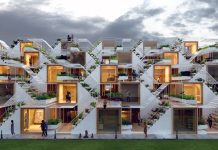Introduction to Dispersed Armament in Construction
In the evolving world of construction, the term “dispersed armament” is garnering attention for its innovative approach and applications. This article aims to provide a comprehensive understanding of dispersed armament, its benefits, costs, and uses in modern building practices. By integrating this technique into your project, you could significantly enhance the structure’s durability and functionality.
What is Dispersed Armament?
Dispersed Armament, or distributed reinforcement, refers to the method of strengthening concrete or other building materials by uniformly distributing fibrous or small, discrete reinforcing materials throughout the mix. This technique contrasts with traditional reinforcement methods that typically involve the use of larger, more concentrated reinforcing materials like rebars or meshes.
Advantages of Dispersed Armament in Construction
The implementation of dispersed armament technology offers numerous advantages in construction projects. Here are some of the key benefits:
- Enhanced Durability: The uniform distribution of reinforcing materials increases the overall toughness and longevity of the structure.
- Improved Crack Resistance: It significantly reduces the formation of cracks and fractures, providing a more robust and stable construction.
- Versatility in Applications: Dispersed armament can be utilized in various construction scenarios, from residential buildings to complex industrial structures.
Cost Implications and Availability
While the initial cost of materials for dispersed armament might be higher than traditional reinforcement, the long-term savings in maintenance and repair can be substantial. It’s crucial to consider the total life-cycle cost when evaluating the feasibility for your project. Availability of these materials has become more widespread, with many suppliers offering a range of options suitable for different construction needs.
The Role of Dispersed Armament in Modern Building Practices
Incorporating dispersed armament into modern building practices signifies a move towards more resilient and sustainable construction methods. As the industry seeks to improve safety standards and minimize environmental impact, dispersed armament stands out as a forward-thinking solution. Its application in earthquake-resistant buildings or in areas prone to extreme weather conditions demonstrates its potential to transform the construction landscape.
Application and Implementation
To effectively implement dispersed armament in your project, it’s crucial to understand the various types available and their specific applications. Common types of materials used include steel fibers, glass fibers, and synthetic fibers, each offering distinct advantages. The choice of material will depend on the project requirements, environmental conditions, and desired properties of the finished structure.
Best Practices in Dispersed Armament
Adopting best practices is essential for maximizing the benefits of dispersed armament. This involves careful planning, selection of quality materials, and skilled labor for application. Regular quality checks and adherence to industry standards ensure the longevity and performance of the construction.
Case Studies: Successful Implementations of Dispersed Armament
Examining real-life examples provides valuable insights into the practical applications and benefits of dispersed armament. Case studies from various sectors, including residential, commercial, and infrastructure projects, illustrate the versatility and effectiveness of this technology.
Future Prospects and Innovations
The future of dispersed armament in construction looks promising, with ongoing research and technological advancements. Innovations in materials and application methods continue to enhance its performance and accessibility. As the industry embraces more sustainable practices, dispersed armament is set to play a pivotal role in the construction of eco-friendly and resilient buildings.
Conclusion: Embracing Dispersed Armament for Sustainable and Durable Construction
Dispersed armament represents a significant step forward in construction technology, offering a blend of durability, efficiency, and sustainability. By understanding its applications, benefits, and best practices, professionals in the industry can leverage this innovative method to build structures that stand the test of time. As the construction landscape evolves, dispersed armament will undoubtedly be at the forefront of building the resilient and sustainable structures of tomorrow.
This article was created in collaboration with SOBIR, a platform offering a wealth of information focused on construction, home installations, renewable energy, and gardening. The site is a valuable resource for individuals planning to build a home, interested in modern installation technologies, or seeking practical gardening advice.







